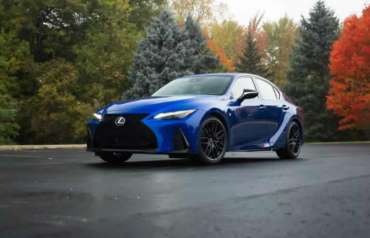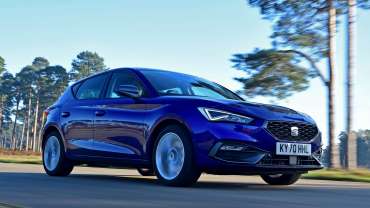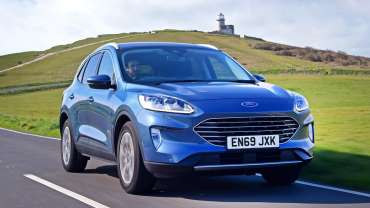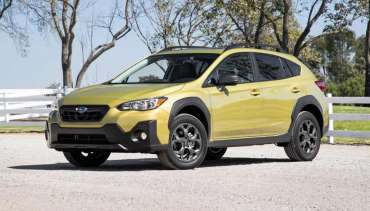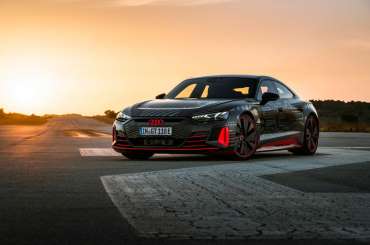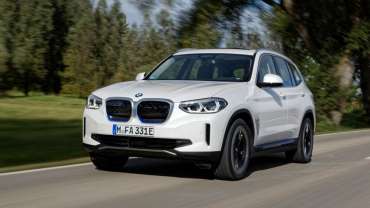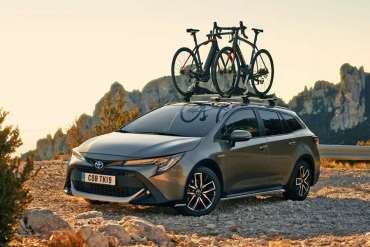
Worldcarblog.com
2021 Lexus IS 350 Review: Refocused but Not Rejuvenated
The verdict
A few mild updates keep Lexus’ sporty IS sedan alive and kicking, aimed squarely to capture the few remaining sports sedan buyers left on the market.
Versus the competition
The updates don’t go deep enough to make the IS 350 fully competitive against newer, fresher, faster rivals like the BMW M340i, Genesis G70 or Acura’s new TLX.
The beautiful thing about so many people starting to abandon entry-level luxury sedans for entry-level luxury SUVs and crossovers is that for the few remaining players in this class, a change is taking place. This is becoming especially obvious at the Japanese luxury brands, where instead of abandoning compact sports sedans, they’re changing their focus. No longer are they just entry-level models; the latest ones are being realigned specifically to be appealing sports sedans. The thinking goes that anyone still looking at a sedan over an SUV is really in it for the style and fun-to-drive factors, so why not make them the main focus of the car?
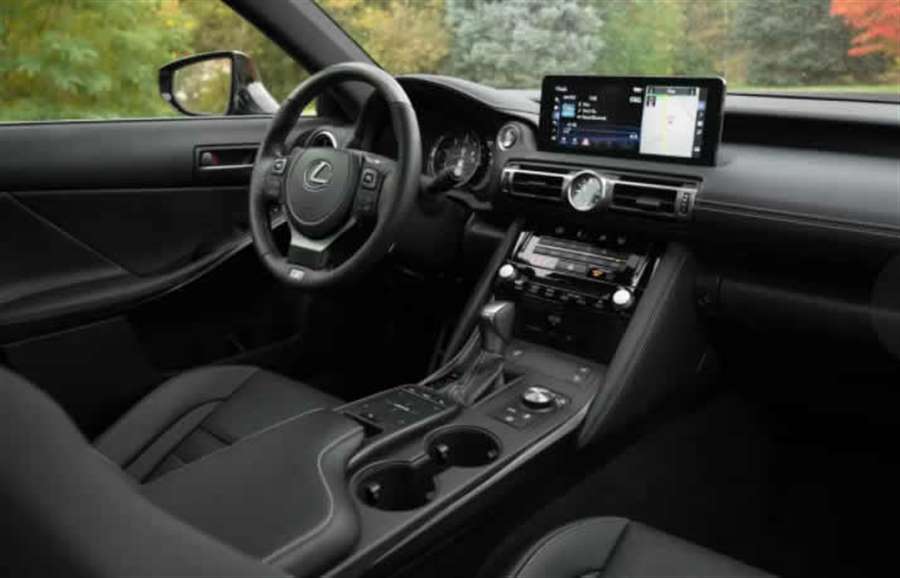
Acura did it with the new 2021 TLX, and now Lexus has done it with the 2021 IS 300 and IS 350. But has the redo and realignment of the IS gone far enough to keep it competitive against newer, fresher, faster rivals?
Looks a Bit Fresher
There are two models to choose from in the new IS lineup: the entry-level IS 300 with a 241-horsepower, turbocharged 2.0-liter four-cylinder engine, or the IS 350 you see here with its naturally aspirated 311-hp, 3.5-liter V-6. Either model can be had with rear- or all-wheel drive, but if you go for an IS 300 AWD, it actually comes with a less powerful, 260-hp version of the V-6 that also has less torque than the turbo four-cylinder. All RWD cars come with a standard eight-speed automatic transmission, while AWD cars come with a six-speed automatic.
Here’s where we start to see the new focus on making the IS a sporty sedan: The IS 300 F Sport is no longer a thing. You can’t get the F Sport handling and appearance package on that version — but all IS 350 models automatically come with the F Sport trim, meaning you can get an IS 350 only in F Sport guise. If you opt for the IS 350 (which you probably should given its significant power advantage over the IS 300), you’ll be getting this — a compact sports sedan with a 311-hp nonturbo V-6 carried over from the past model year with standard rear-wheel drive, an eight-speed automatic, a sport suspension, standard 19-inch wheels and more aggressive styling.
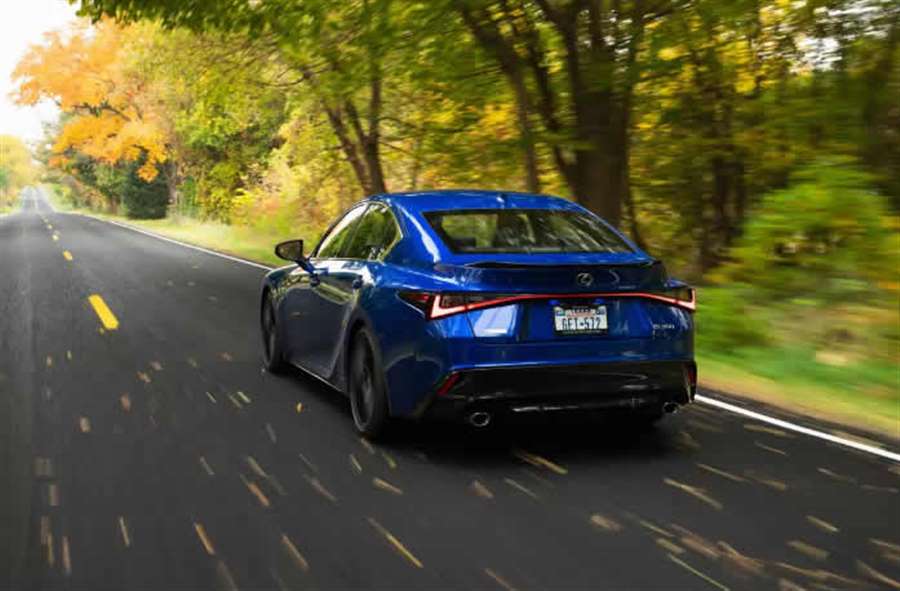
Lexus has updated the look of the IS for 2021, and I have to say that it’s a subtle but definite improvement. Those weird Nike swoosh signature LED lights up front have now been well integrated into the larger headlight assembly and look much, much better. The Lexus signature spindle grille is still here, but it’s either simply grown on us or just doesn’t look as offensive as it used to; either way, I think we’re finally used to it. The fenders are a tad wider to accommodate the bigger wheels and tires on the IS 350 F Sport, and a new trunk and rear bumper with a full-width LED taillight makes for more muscular-looking haunches. The Dynamic Handling Package available on the F Sport brings a couple of styling changes, too, including the addition of lovely matte-black 19-inch BBS wheels and a rather unnecessary carbon-fiber trunk spoiler. The overall changes have cleaned up the IS 350 considerably, giving it a lower, wider, more menacing appearance that’s less funky but more attractive.
Doesn’t Drive Any Differently
Out on the street, the new IS 350 really doesn’t feel that different from the last one. More than 300 horsepower might sound like a lot on paper, but 280 pounds-feet of torque isn’t all that impressive anymore, and it shows up in the IS 350’s rather underwhelming straight-line acceleration. Many of its competitors, such as the Acura TLX, Alfa Romeo Giulia, Genesis G70 and BMW 330, all employ turbocharged engines with torque that’s available low in the rev range, making for punchier acceleration than the IS 350 delivers. The IS certainly isn’t slow, but neither does it have the immediacy you’d expect when you floor the accelerator as you enter a highway on-ramp or pull out in front of traffic. Lexus’ given 0-60-mph time of 5.6 seconds isn’t exactly class-leading anymore. The eight-speed automatic transmission is well executed and does a decent job of providing smooth shifts, but it doesn’t seem quick or eager to kick down when you plant your foot, only adding to the more relaxed, slightly underpowered feeling the IS 350 delivers. Simply put, the IS 350 feels like it could use a more up-to-date engine and transmission combo, something that would boost its acceleration to match the more powerful and similarly priced offerings like the BMW M340i or Infiniti Q50 Red Sport 400.
There’s not much to fault with the IS 350’s handling, however. The suspension provides an excellent balance of comfort and responsiveness that really does impress with its sophisticated feel. For a bit more money, you can specify the Dynamic Handling Package for your IS 350 F Sport that includes an electronic adaptive suspension, adjusting the ride firmness and response via a mode selector on the center console. I honestly didn’t find that it affected the ride quality or steering effort noticeably if I switched from Normal mode to Sport S or Sport S Plus modes, but it did seem to wake up the powertrain with a more responsive throttle and allow more revs to build before shifting. Keeping it in Sport modes isn’t really conducive to serene driving, however, so you’re likely going to just keep it in Normal where the IS 350 proves to be a pleasantly quiet touring car that allows for faster cruising speeds than you might otherwise expect.
Time to Rethink the Interior
Inside, there have been a few changes to the IS 350 for 2021, but again the car is showing how much it could use a rethink to its whole platform. The interior mixes decent fake leather and nice ash wood accents on the F Sport with unremarkable plastic surfaces. One notable option is the Circuit Red interior, which truly looks stunning — sadly, my test car came outfitted with a more somber, less interesting black interior. You have a highly welcome new touchscreen front and center, which finally allows you to skip using Lexus’ remote control for the multimedia system. An 8-inch screen (measured diagonally) is standard, and the 10.3-inch screen in my test car is optional on vehicles equipped with navigation. It’s almost 6 inches closer to the driver than the previous screen, so it’s easier to see and reach. Apple CarPlay and Android Auto are standard, as is Amazon Alexa integration.
Lexus’ maddening remote joystick control has been replaced by a new touchpad, which is a bit better, but there’s no substitute for being able to touch the screen directly to do what you want to do. Thankfully, Lexus has finally realized that.
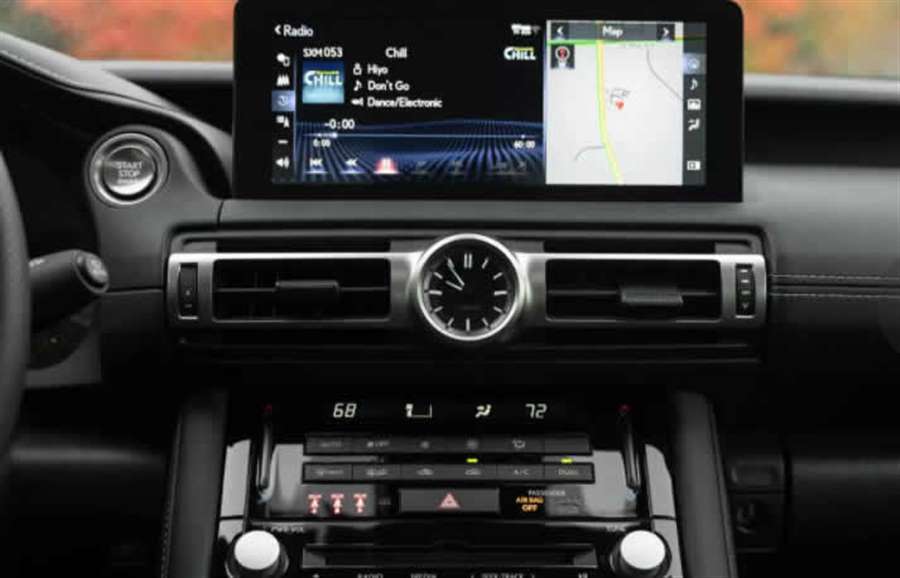
There isn’t much continuity to button design, with some buttons feeling large and well labeled, while others are tiny and hard to find, and still others are almost completely obscured from the driver’s view and difficult to use at all. The digital gauge cluster features an unusual sliding round master gauge that first appeared in F Sport versions of the IS and other Lexuses many years ago, inspired by the LFA supercar, but it honestly just seems needlessly gimmicky. And the fact that a bright green “Eco” light illuminates in the gauge cluster whenever the engine enters its fuel-saving mode is really annoying. In short, the IS 350’s interior layout and control strategy needs a modern redo.
But that’s not really the biggest issue with the interior. The IS 350 is cramped inside, with a narrow cabin and fairly tight seats. It features an unusually high driving position that feels as if the seat could stand to be an inch or two lower; more adjustability to the bottom cushion’s angle would be nice, too. The rear seats are also tight, with adequate room for two on short trips and decidedly more legroom than, say, an Alfa Romeo Giulia, but overall room in back feels about average for this category of sedan. There’s plenty of room in the trunk, and the rear seats do fold to allow for larger items. Yes, this is a compact sports sedan, and nobody’s expecting it to be a limousine. But its overall design aesthetic, packaging and control layout all seem to be in need of a more comprehensive update.
A Better Value Only on Base Models
The basic Lexus IS 300 RWD starts at $40,025 (all prices include destination), and my IS 350 F Sport RWD test car starts at a still reasonable $43,925, which rings in several thousand dollars less than the 2020 IS 350 F Sport thanks to Lexus’ new trim strategy. Add the moonroof, Dynamic Handling Package, navigation with premium Mark Levinson audio and a few other odds and ends, and you come to my car’s as-tested price of $55,220. That’s a little harder to swallow, frankly, given the other competitors you have at this price like a BMW M340i or Infiniti Q50 Red Sport 400, both of which outgun the IS 350 in the powertrain department. Or even opt for the new 2021 Cadillac CT5-V or Genesis G70 3.3T, both of which also feature more powerful engines for less money, accompanied by more modern interiors.
Lexus’ entry-level sports sedan is meant to be a good starting point for fans looking to get into the brand, and its refocused energy on capturing the few remaining sports sedan buyers with a more value-oriented F Sport model is commendable. But its updates for 2021 didn’t quite go far enough to make it a more competitive offering versus the considerably newer, fresher and more powerful competitors. Still, it has its looks and refinement going for it, along with Lexus’ reputation for reliability. If those factors weigh more heavily for you, then the new 2021 Lexus IS might be worth putting on your shopping list.
Cars.com’s Editorial department is your source for automotive news and reviews. In line with Cars.com’s long-standing ethics policy, editors and reviewers don’t accept gifts or free trips from automakers. The Editorial department is independent of Cars.com’s advertising, sales and sponsored content departments.
Source: cars.com
New SEAT Leon e-Hybrid 2020 review
The new SEAT Leon e-Hybrid brings plug-in power to the hatchback's range for the first time
Verdict
With price on its side, the SEAT Leon instantly becomes one of our favourite plug-in hybrid family cars. The rock-bottom tax costs make it one of the more appealing PHEVs for company car drivers, while private buyers will revel in this car’s usable electric range. Its powertrain is perhaps not quite as slick as the one you find in the Mercedes A 250 e, but the SEAT remains decent to drive and easy to live with. Also available as an ST estate, this new Leon e-Hybrid could well be the consummate all-rounder.
While the new SEAT Leon was the last of the VW Group’s MQB mainstays to launch in the UK, it’s actually the first to be fitted with a plug-in hybrid powertrain.
Of course the Audi A3 40 TFSIe, Volkswagen Golf GTE and Skoda Octavia iV are all just around the corner, but it’s the SEAT we get to sample ahead of the rest. Fitted with a 1.4-litre TSI petrol engine and a 13.1kWh battery, the Leon produces a warm hatch-rivalling 201bhp and 350Nm of torque – plus a zero-emission range of up to 40 miles.
It’s available in all but the Leon’s entry-level SE and SE Dynamic trims – and with prices starting from a smidge under £31,000, it’s one of the most affordable plug-in hybrids on the market; the Kia Niro and Hyundai Ioniq undercut it, but only by a couple of hundred pounds.
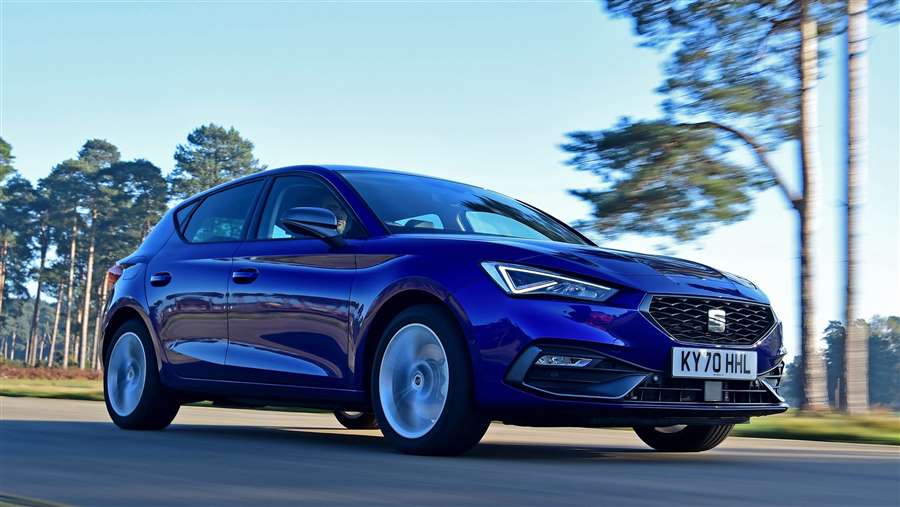
The Leon e-Hybrid’s tax advantages are clear. Company car drivers not swayed by the FR Sport, First Edition or Xcellence Lux’s larger 18-inch wheels will bag themselves a car with that quoted 40-mile (WLTP) electric range – resulting in class-leading (six per cent) Benefit in Kind costs.
Still, at this end of the market the real-world cost implications are minor: a higher-rate tax payer looking at the FR and FR Sport models will pay BiK of £1,237 or £1,299 per year respectively. Whichever you go for, you’ll save a decent chunk over the equivalent 1.5 TSI 150PS petrol car, which in like-for-like FR spec will set you back more than £3k a year.
But of course, the usual caveats apply. You’ll need to plug in your Leon e-Hybrid regularly to benefit from this car’s true low running costs. Topping up the battery will take just under four hours via a 3kW home wallbox, or around six hours using a three-pin plug. The resulting range, in our experience, is closer to 30 miles than the published 40 in normal driving.
But that’s still more than you’ll get from either the Hyundai or Kia, and on par with the flashier Mercedes A 250 e – a model many company car drivers will be looking very closely at thanks to its premium interior and upmarket badge. Of course, the SEAT isn’t as posh or plush as its German rival, but you might be surprised at the list of toys – even on basic FR cars.
Our test model was fitted with absolutely no options, yet still came equipped with 17-inch wheels, LED lights, three-zone climate control, a fully-digital cockpit display and a 10-inch infotainment system with ‘Connected’ navigation.
Step up to FR Sport and you’ll add larger 18-inch wheels, plus heated front seats and a heated steering wheel. Xcellence brings dynamic indicators, four USB-C ports and a rear-view camera, while flagship Xcellence Lux gets leather, an electric tailgate and SEAT’s Safety and Driving Pack with adaptive cruise.
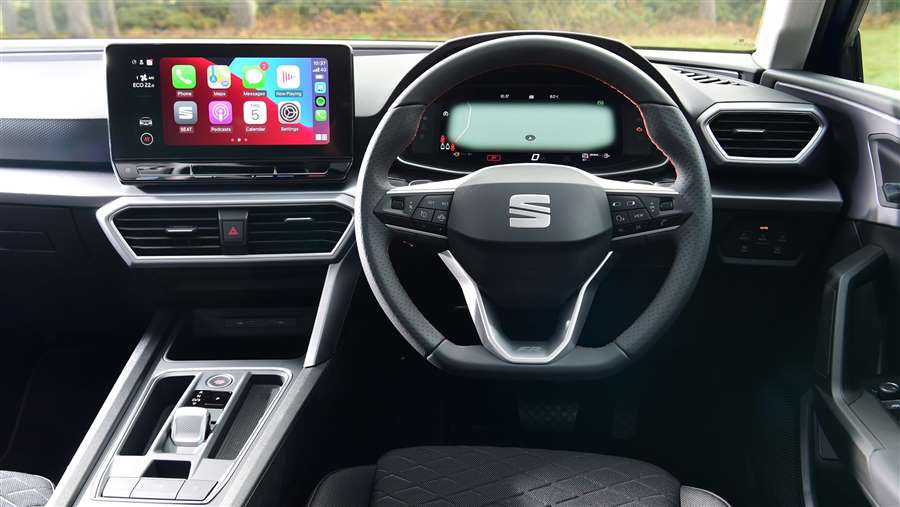
Visually, there’s very little to separate this e-Hybrid variant from the rest of the range. In fact, from the outside, the only tell-tale signs this is the plug-in model come courtesy of the charge flap on the front wing and small badge on the bootlid. Otherwise, it’s business as usual.
It’s the same story inside, which is to say it’s filled with crisp, digital screens, but otherwise a little dark and dull. Our FR car’s red stitching does little to lift the mood; the Leon offers a functional layout that perhaps lacks the flair of some rivals.
Our first drive of the latest Leon featured the mid-range 1.5-litre TSI petrol engine with 128bhp and a six-speed manual gearbox. Pleasingly, much of what we liked about that car has transferred to this PHEV model; good body control, responsive steering, and a punchy powertrain.
Performance is really very good. Use both power sources and the Leon e-Hybrid builds speed at a frankly alarming rate – 0-62mph takes just 7.5 seconds. The engine can drone under load and at higher revs, but settles at a cruise. In fact, on the motorway you’d be hard-pressed to know whether the petrol motor was firing at all.
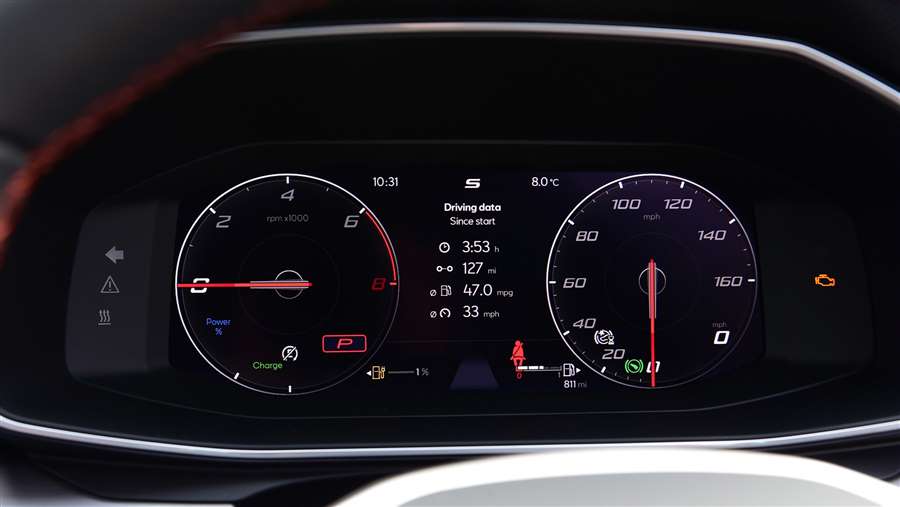
The ride is still quite firm, but unlikely to be a dealbreaker. It’s stiff, but the up-side is a level of control missing in many family hatchbacks. The car feels safe and secure at higher speeds – and only really rough or undulating roads upset its composure.
What may be less pleasing to potential buyers is the integration of that battery and the associated electric motor. In e-Mode (the car’s default setting) the Leon is quiet and refined, but the A-Class is better at switching between petrol and electric when running in its hybrid setting. Furthermore, the Mercedes is keener to cut the engine and return to EV power when there’s sufficient charge left in the battery.
That said, the Leon is surprisingly efficient when its cells are depleted; over 120 miles of urban, motorway and rural roads we managed an indicated 48mpg – similar to what we’d expect from the conventional 1.5 TSI. It’d be possible to double that if you charged at home overnight and started with a full battery, of course.
But the Leon e-Hybrid’s Achilles heel is practicality. SEAT’s evergreen family car has always sat middle of the pack when it comes to boot space and cabin room, and the new model is no different. Space in the back of the hybrid is unchanged, and the three-zone climate control will be a welcome addition for rear-seat passengers.
Yet boot space takes a big hit. The standard car’s 380-litre boot is marginally bigger that you’ll find in a Ford Focus, and it matches the latest Volkswagen Golf – but this hybrid sacrifices a whopping 110 litres to make space for the clever battery tech.
While that may not be a big deal on its own, you also miss out on any kind of under-floor storage, meaning you’ll need to keep the (standard) Mode 3 cable and (optional) three-pin plug alongside your luggage. At least you get a bag to keep things tidy.
Regardless, it’s a minor moan when you consider SEAT offers the same PHEV package in the more versatile ST estate bodystyle – all for just £1,030 more.
Source: autoexpress.co.uk
Ford Kuga SUV review
“The latest Ford Kuga is great to drive, good value and practical, so it should prove to be a very popular family SUV”
The Ford Kuga is a family SUV that’s an alternative to models such as the Volkswagen Tiguan, Skoda Karoq and Hyundai Tucson. Ford has two other SUVs, the EcoSport and the Puma, and the Kuga is larger than both of them - and costs more to buy.
If you’re looking for a medium-size SUV, there’s also the Toyota RAV4, the Peugeot 3008 and many more. Almost all the big car manufacturers offer a model like this, as they’re so popular. The Ford Kuga has its own appeal, though, which helps it to stand out.
Best family SUVs
The Kuga’s biggest strength, and the aspect that will appeal most, is the way it drives. The original Kuga was known for being the best car to drive of its type when it came out, and while this new model isn’t quite so far ahead of the competition, it’s still really enjoyable to spend time behind the wheel.
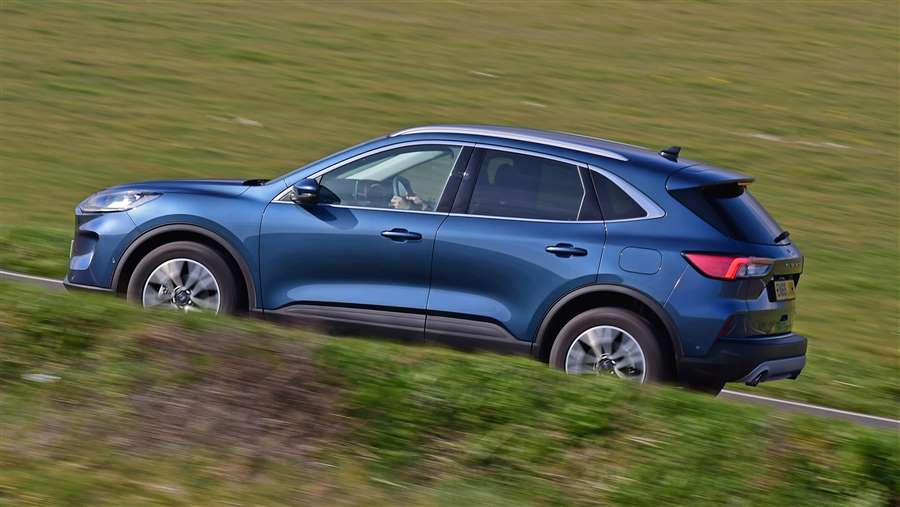
There are plenty of engines to pick from; there are two 1.5-litre petrol options, three diesels, a petrol-electric hybrid and a plug-in hybrid (PHEV) model with an official economy figure of over 200mpg. This version can drive for 35 miles on electricity alone, which is how it manages that incredible figure. One of the diesel engines (the 148bhp 2.0-litre model) also features mild-hybrid assistance to boost economy, though it can’t drive on battery power alone.
You’ll recognise the interior as Ford has carried over most of the parts from its other SUVs and hatchbacks. While it hasn’t got quite the same visual appeal as a Peugeot 3008 or Mazda CX-5, it’s logically laid out and the standard-fit eight-inch touchscreen controls a lot of the features. High-spec cars get a crisp 12.3-inch digital instrument cluster for the first time.
There are five trim levels to choose from, with the line-up kicking off at the Zetec model. Considering its entry-level position and low price, it’s rather well-equipped with sat nav, wireless phone charging, auto headlights and keyless start, plus a lot of standard safety kit.
Titanium adds LED lights, two-zone climate control and a premium speaker system, plus that 12.3-inch digital dial display. Then there are the sporty-looking ST-Line Edition and ST-Line X Edition pair, and the range-topping Vignale with unique styling touches and even more equipment.
A family SUV wouldn’t be much use if it wasn’t practical, but the Kuga impresses in this respect too. The rear seats slide fore and aft so you can prioritise legroom or boot space, and there are 526 litres to fill with the seats pushed forward. That compares well to the SEAT Ateca’s 510 litres and the 472 litres offered in the Renault Kadjar.
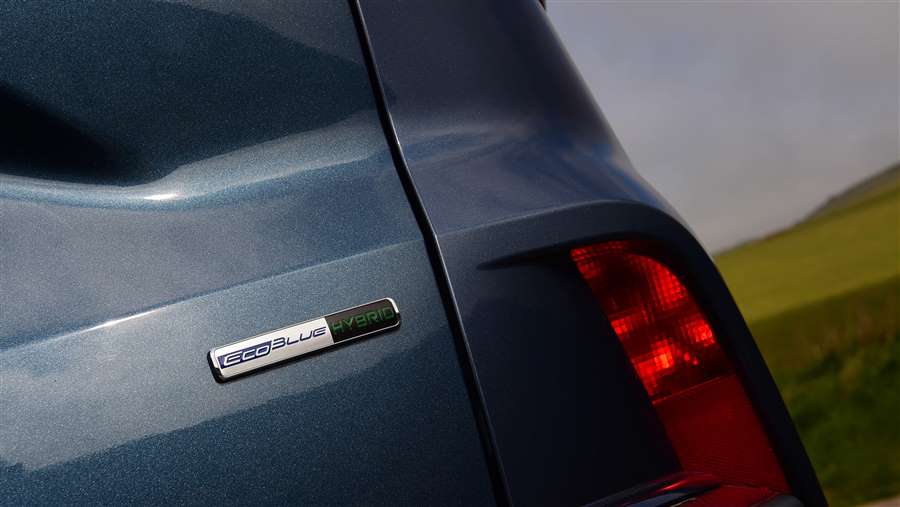
The Kuga has already gained a five-star Euro NCAP safety rating, which should be reassuring. However, Ford will hope the new Kuga improves the company’s position on our Driver Power survey; it came 24th out of 30 manufacturers in 2020.
Ford Kuga SUV - MPG, running costs & CO2
The Ford Kuga has economical engines and maintenance costs should be very competitive
Ford still has faith in diesel power, despite a fall in sales. In the Kuga there are three to choose from: a 118bhp 1.5-litre, a 148bhp 2.0-litre with mild-hybrid assistance and a 187bhp version of the 2.0-litre, which goes without the mild-hybrid tech. The mild-hybrid engine returns up to 57.6mpg and is expected to be popular with higher-mileage drivers, while the smaller diesel offers up to 60.1mpg with the manual gearbox (53.3mpg with the automatic) and the 187bhp engine can manage up to 49.6mpg. It’s the only model with four-wheel drive, so that figure isn’t too bad.
The two petrol engines both return between 42 and 43mpg, so won’t be too costly to run for low-mileage drivers. The normal hybrid model can return up to 51.4mpg. Provided you keep the battery topped up and drive mostly on electric power, the 2.5-litre PHEV model could offer the best economy; Ford says up to 201.8mpg is possible, but we’d recommend taking that with a pinch of salt. On longer journeys when the petrol engine will be the main power source, you’ll likely get an MPG figure in the mid-forties.
Perhaps more relevant is its claimed 35-mile electric range, as it will allow many commuters and families to complete their daily journeys without using a drop of fuel if the battery is fully charged. The PHEV will also appeal to business drivers, as its 32g/km CO2 emissions figure means a Benefit-in-Kind (BiK) tax rate of just 10% from April 2020. That compares to a 30% BiK rate for most petrols (the normal hybrid is 29%) and 30-32% for the front-wheel-drive diesels. VED costs £150 for petrol and diesel models, while the PHEV qualifies for a £10 annual discount.
Insurance groups
Insurance groups cover a relatively wide spread in the Kuga range but it shouldn’t be too expensive to insure.The entry-level petrol model sits in group 10, while the lower-powered diesel is in group 12. The range moves up to the most expensive PHEV model, which is in group 21.
For comparison, the Skoda Karoq starts in group 10 and the Peugeot 3008 spans groups 11-24.
Servicing
Ford has the largest dealer network in the UK, with a garage in most towns, and servicing doesn’t tend to be too expensive. Your dealer will be able to advise on service plans, which will cover a couple of services for an upfront fee or monthly payments.
Warranty
Like all new Ford cars, the Kuga features a three-year/ 60,000-mile warranty. That’s about average, but the Toyota RAV4 and Hyundai Tucson both have five-year warranties, and the Kia Sportage and MG HS offer an impressive seven years of cover.
Engines, drive & performance
It’s safe to say that previous Kugas have been a mixed bag to drive. The first-generation car was more fun than almost all of its rivals, but Ford tried to make the next one appeal to a wider audience, and it lost some of its sharpness as a result. We’re happy to report that the latest car is a return to form; it’s more agile than you might expect and doesn’t roll too much if you take a corner quickly.
The downside of that is a slightly firm ride. You’ll notice the imperfections in the road more than you would in a Volkswagen Tiguan, but we didn’t find it uncomfortable and most bumps were absorbed without any fuss. The car can start to feel fidgety at higher speeds but that’s mainly noticeable on rougher surfaces.
We found the steering light but it still has a lot more feel than plenty of other SUVs. The manual gearbox, standard in all but the 187bhp diesel and the plug-in hybrid, is precise and great to use.
Ford Kuga petrol engines
The two 1.5-litre EcoBoost petrol engines have been carried over from the old Kuga, but the entry-level 118bhp engine (only offered on Zetec models) is now almost a second quicker from 0-62mph. It still takes 11.6 seconds to hit that threshold, though, and we’d recommend going for the 148bhp version instead. It’s both more economical and quicker, hitting 0-62mph in a much more reasonable 9.7 seconds. Both these engines come with a six-speed manual gearbox and front-wheel drive.
Diesel engines
Also carried over from the old car is a 1.5-litre diesel engine, and it’s the only engine with a choice of manual or automatic gearboxes. Its 118bhp doesn’t feel quite enough to power such a big car, and 0-62mph takes 11.7 seconds for the manual or 12 seconds for the automatic. It’s around a second quicker than the same engine in the Mk2 Kuga, but still a bit pedestrian.
The diesel sweet spot is the 148bhp 2.0-litre engine, which now comes with mild-hybrid technology - improving fuel efficiency and giving the engine welcome extra grunt. It’s the most efficient diesel and its 9.6-second 0-62mph should be sufficient for the majority of buyers. Above that, there’s a 187bhp 2.0-litre engine without the mild-hybrid assistance, which reduces the acceleration time to 8.7 seconds. At present, this only comes with four-wheel drive and an automatic gearbox.
Hybrid engines
The Kuga is available as a normal hybrid (Ford labels it as FHEV) and as a plug-in hybrid (PHEV). Both use a 2.5-litre petrol engine, an electric motor and a battery. The normal hybrid uses engine power to charge the battery, whereas the PHEV can be plugged in, either at home or at a public charger.
In both models, the Kuga will move off in near-silence thanks to the electric motor. Power is instant and delivered smoothly.
Both cars use a CVT gearbox. This is different to a normal automatic as there aren’t any individual gears as such, so when you put your foot down it tends to bring revs up, causing an unpleasant droning noise.
Interior & comfort
Ergonomic if a little unimaginative, the Ford Kuga’s interior shares much with other Fords
The last Kuga was generally quite refined but was a little noisy on the motorway. From our drives so far, it seems that its replacement is better in this regard. The 2.0-litre diesel with mild-hybrid tech sounded a little vocal under hard acceleration but it settles down when cruising.
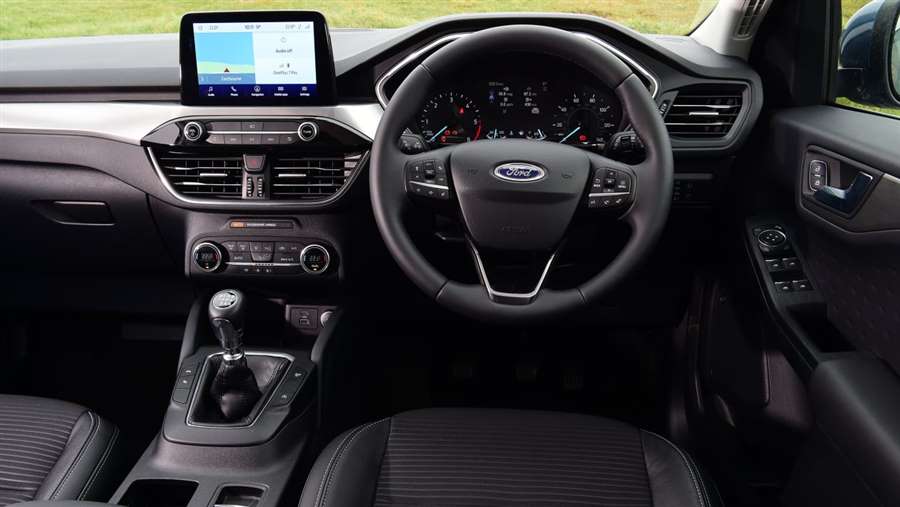
We found that the bases of the sports seats fitted to our Titanium-spec test car were a little flat for our liking, making them uncomfortable on longer drives. Otherwise, the Kuga features plenty of equipment to take the stress out of the daily commute; lane-keeping assistance, all-round parking sensors, cruise control and hill-start assist all come as standard.
Ford Kuga dashboard
Ford has decided to keep things simple, giving the Kuga the same interior as the Fiesta, Focus and other models. A Peugeot 3008 certainly has more design flair inside, but the Kuga’s interior is simple and intuitive, whether you’re familiar with Ford interiors or not. Besides, the cabin design is a marked improvement over the old Kuga, which was really showing its age having been around since 2012.
An eight-inch touchscreen sits on top of the dashboard, plus a 12.3-inch digital dial display on Titanium models and above. Beneath that is a panel for audio controls, the air vents and the heating controls, with a few extra buttons each side of the gearlever.
The material quality is good in the places where you’ll touch, but there are cheaper, scratchier materials lower down. It all feels well-built, though, so it should stand up to years of family life.
Ford’s SYNC 3 infotainment system is fitted as standard and provides plenty of connectivity. It includes both Apple CarPlay and Android Auto, allowing your phone’s apps to be displayed on the screen, plus DAB radio and Bluetooth. Voice control is also part of the package, so you can access the screen’s functions without taking your hands off the wheel or eyes off the road.
Equipment
Buyers have a choice of five trim levels. Zetec is the entry point, and includes luxuries like keyless start, auto lights and wireless phone charging. It also gets sat nav, cruise control and a handy heated windscreen, but you need to step up to Titanium in order to get dual-zone climate control and auto wipers. Titanium also brings LED headlights, keyless entry, a 12.3-inch digital dial display and a premium B&O sound system, too.
ST-Line gets sporty detailing inside and out, plus sports seats and cornering LED fog lights. ST-Line X models can be distinguished by larger alloy wheels and a panoramic sunroof. There’s also heated seats in the front and rear.
The top-spec Vignale model aims to look elegant rather than sporty, and has lots of equipment to offset its high price. You get metallic paint as standard, along with a different grille, leather upholstery and a full set of heated seats.
Options
Once you’ve picked your trim, you can then select from a number of options including a Technology Pack (upgraded headlights and a head-up display - £400), a winter pack (heated front seats and a heated steering wheel - £400) or a tow bar for £625. We’d recommend spending £100 on a space-saver spare wheel instead of the standard-fit tyre repair kit.
Practicality & boot space
The Ford Kuga can compete with the class leaders on practicality
The latest Ford Kuga is bigger in most respects than its predecessor, with a little more space freed up inside. It’s still strictly a five-seater, like many of its rivals, but Ford doesn’t offer a seven-seat SUV in the UK - just the S-MAX, Galaxy and Grand Tourneo Connect MPVs. This seems like a missed opportunity, as the seven-seat Skoda Kodiaq, Peugeot 5008 and Nissan X-Trail SUVs have all proven popular.
Ford Kuga interior space and storage
We expect that the Kuga will be bought by people who have outgrown the Focus or other cars of that size, and it’s usefully more spacious. Adults will have more than enough space to stretch out in the rear seats, and should be comfortable on long journeys.
The glovebox and door pockets are a good size, and there are a couple of other little cubbies and storage areas on the centre console. All cars get an electrical charging point in the back of the front armrest, which will keep your passengers’ phones or tablets powered.
Boot space
The Kuga has handy sliding rear seats, so you can position them to prioritise legroom or boot space. Even when slid all the way back, most Kuga models offer 475 litres of space - 100 litres more than the Focus - and this increases to 526 litres with the seats pulled forward (measured to the parcel shelf). With the rear seats flipped down and out of the way, you’ve got up to 1,534 litres to fill. A Skoda Karoq is slightly more practical, offering 479-588 litres with the seats up and 1,605 litres with them down, but the difference is unlikely to make you rule out the Kuga.
Because of where the battery pack’s placed, the plug-in hybrid models get a slightly smaller boot. Wherever the seats are, the boot is about 50-60 litres smaller than petrol and diesel variants. Compared to some other PHEVs, that’s not a huge drop in luggage capacity.
Towing
If you plan on towing regularly, make sure you pick the right engine, as all have different maximum towing capacities. The 118bhp diesel can tow a braked trailer weighing up to 1,500kg, increasing to 1,600kg (118bhp petrol), 1,800kg (148bhp petrol), 1,900kg (148bhp diesel) and 2,100kg (187bhp diesel). Not all PHEVs can tow, but the Kuga plug-in can manage up to 1,200kg. Speccing a tow bar costs £625.
Reliability & safety
The Ford Kuga has a full five-star safety score but reliability is unknown
Ford Kuga reliability
The Ford Kuga is too new to feature in our 2020 Driver Power owner satisfaction survey, but the previous model scored quite well; it placed 44th out of the top 100 cars ranked, and only 8.5% of buyers told us about a fault in the first year of ownership. However, Ford came a meagre 24th out of 30 brands in our manufacturer list. With the new Focus, Puma and Kuga now all on sale, we expect Ford to climb up the rankings in the next couple of years.
Safety
Independent testers Euro NCAP put the Kuga through its paces before it even went on sale, and it passed with flying colours. Receiving a five-star score, the Kuga scored 92% for adult safety, 86% for child safety, 82% for pedestrian protection and 73% for the array of safety kit on board.
Standard safety features include lane-keeping assist, hill-start assist, auto emergency braking and intelligent speed assist. A Driver Assistance pack costs £1,000 and adds kit such as blind-spot monitoring, traffic sign recognition and front and rear cameras.
Source: carbuyer.co.uk
2021 Subaru Crosstrek Sport First Test: When Power Solves Everything
Has a class leader gotten even stronger?
Being a segment leader is hard work, especially in a segment as hot as subcompact SUVs, which continues to grow rapidly. Subaru already has a solid foundation to stay on top, and now, the Forester's 2.5-liter flat-four engine is finding its way under the Crosstrek's hood in Sport and Limited trims. Will a more powerful engine be enough to keep this crossover relevant and fend off new rivals? We got a 2021 Subaru Crosstrek Sport in to find out.
Does The Subaru Crosstrek Drive Better With More Power?
We've been begging Subaru for a more powerful Crosstrek since it made its debut as a 2013 model. Seven years later, the automaker finally obliged. So does the 2.5-liter's 182 hp and 176 lb-ft of torque make a noticeable difference over the base 2.0-liter's 152 hp and 145 lb-ft? Oh yeah. Passing, merging, and climbing steep inclines are a cinch; the Crosstrek moves promptly thanks to the bigger engine. In comparison, models with the 2.0-liter feel excruciatingly sluggish, especially on the freeway. Put your foot down at highway speeds, and the CVT immediately puts the engine in the sweet spot. However, from a standstill or at parking lot speeds, the transmission gets jumpy when you ease into the throttle, causing some head toss.
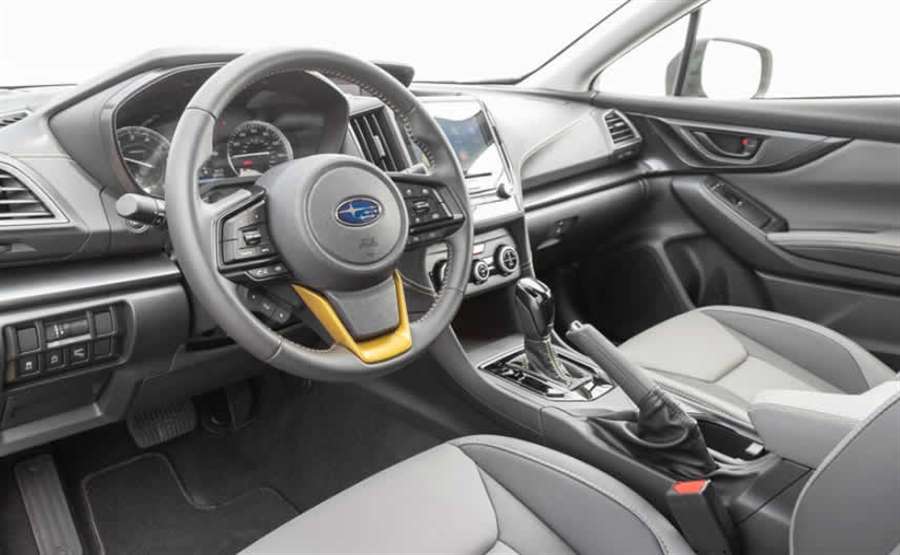
At the track, the Crosstrek Sport hit 60 mph in 7.8 seconds and the quarter mile in 16.0 seconds at 87.7 mph. Our departed long-term Crosstrek 2.0i Premium took 1.2 seconds longer to reach 60 mph before finishing the quarter mile 0.9 second slower at 83.4 mph. Road test editor Chris Walton noted linear power delivery in Sport mode when launched with pedal overlap. If you just mash the accelerator, the CVT simulates shifts, resulting in slower acceleration. The Mazda CX-30 offers similar straight-line performance to the Crosstrek Sport. Turbocharged versions of the Kia Seltos are quicker, hitting 60 mph in 7.3 to 7.4 seconds and the quarter mile in 15.7 to 15.9 seconds.
As with most subcompact SUVs, the Crosstrek prioritizes daily usability over outright performance. When driven sanely, this lifted hatchback possesses good high-speed stability and stable handling. Ride comfort remains a highlight thanks to the suspension's ability to absorb road imperfections and harsh impacts without getting floaty. Accurate steering, which testing director Kim Reynolds appreciated, makes the Crosstrek easy to maneuver through corners and tight spaces. Body roll, while well-controlled, is noticeable because of the car's comfort-minded tuning.
On the skidpad, the Crosstrek Sport generated 0.79 g of lateral acceleration and finished the figure-eight course in 27.9 seconds with a 0.60 g average, which is in the same ballpark as the Mazda CX-30 and Kia Seltos. Surprisingly, our old long-term Crosstrek 2.0i Premium was quicker through the figure eight (27.3 seconds) but provided similar road-holding capabilities as our Sport trim test car. Even more surprising: The plug-in Subaru Crosstrek Hybrid lapped the figure eight in 27.3 seconds at 0.62 g average. Reynolds noted excessive understeer at the limit along with a noticeable lack of grip. Blame the latter on the standard all-season tires, which give up before the chassis does. Stopping from 60 mph took 124 feet, which is on par with most subcompact SUVs. Walton observed good initial bite but found that the Crosstrek dives a lot and the rear gets light during hard braking.
What's The Subaru Crosstrek Like To Live With?
Despite its small exterior footprint, the Crosstrek is supremely practical. Four adults fit comfortably, and the cargo area easily swallows bulky items, especially with the rear seats folded. Big windows provide an airy atmosphere and excellent visibility. The Crosstrek's solid materials will easily handle daily commuting and hauling your outdoorsy gear. It could use more sound insulation, though, because there's an excessive amount of engine and tire noise entering the cabin. Mazda's CX-30 has a quieter, more premium-feeling interior, but you sacrifice practicality and space as a trade-off.
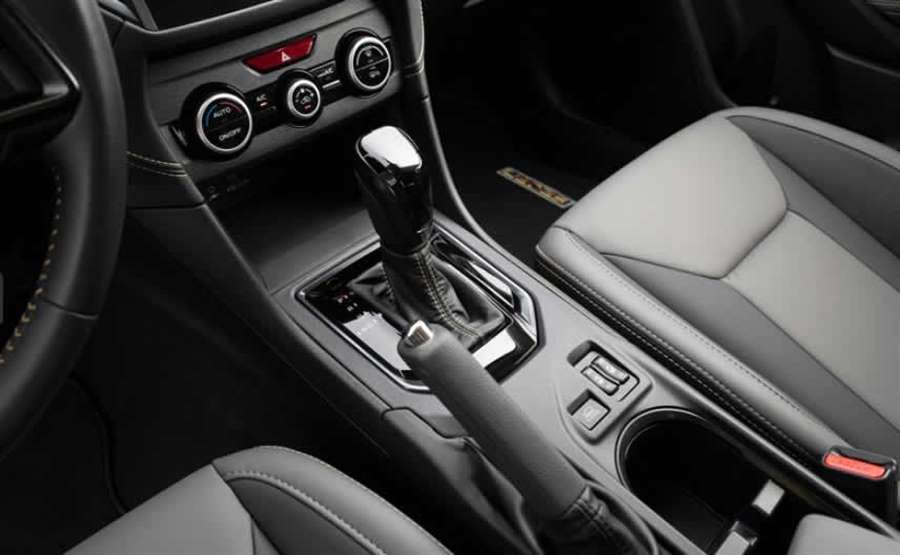
The Crosstrek uses a version of Subaru's infotainment system that doesn't include the 11.6-inch display found in the Legacy and Outback. Our test car had the optional 8.0-inch touchscreen (a 6.5-inch unit is standard) complemented by physical shortcut buttons and knobs. This means you'll figure out how to use the interface in seconds, not hours like the new setup in other Subarus. You won't be digging through submenus in this iteration because most of the frequently used apps and features are one or two inputs away.
EyeSight, Subaru's active safety suite, remains one of the more accurate systems. Lane keep assist does a great job maintaining the center of the lane, gently nudging you over when you get close to the dividers. Adaptive cruise control accelerates and brakes naturally, and the distancing isn't so conservative that another vehicle can cut you off. If only the system would stop making so much noise. EyeSight beeps to let you know when the lane keeping system's steering assistance component turns off and when the two stereo cameras don't see the lane lines. Yeah, it gets irritating quickly.
Is The Subaru Crosstrek Still One Of The Best?
The Subaru Crosstrek's multitalented nature has helped it become a best-seller in the subcompact SUV class. With more power available on the Sport and Limited trims, you get to have your cake and eat it too. No, this doesn't turn the Crosstrek into a lifted hot hatch. Instead, think of this as a drivability enhancement that makes the car even more compelling despite the arrival of new competition. Comfortable, practical, easy to drive, and efficient (EPA-rated at 26/34 mpg city/highway with the 2.5-liter), this little rig is a well-rounded package. We hope that the next-generation Crosstrek builds on this formula, and maybe—just maybe—a subcompact SUV will finally nab the Golden Calipers.
Source: motortrend.com
2022 Audi RS e-tron GT Charges after the Taycan
An early drive of Audi's version of the Taycan reveals some worthy differences.
Despite being part of the same company, Audi and Porsche continue to compete like old rivals. Both companies share an electric-car platform dubbed J1, and both are building similar battery-powered models atop it. Porsche's Taycan launched about a year ago, and now Audi is letting us sample its gorgeous e-tron GT. We spent a day behind the wheel of a camouflaged RS e-tron GT—that's the spicy one—the 590-hp version with the 670-hp Taycan Turbo in the crosshairs.
The hardware that gives the Taycan such impressive handling and acceleration carries into the e-tron GT. This includes two electric motors that provide all-wheel drive, a liquid-cooled 83.7-kWh lithium-ion battery pack, a two-speed rear transmission, three-chamber air springs, rear-wheel steering, and a torque-vectoring rear end.
Under overboost conditions and when using the launch-control function, the estimated 590 horsepower temporarily rises to around 637 horsepower. We expect the sprint to 60 mph will take about 3.0 seconds, and top speed is governed at 155 mph. The basic e-tron GT will make 510 horsepower, or 12 horses fewer than a Taycan 4S.
On the tight, sometimes slippery but rather empty roads on the Greek island of Rhodes, the RS e-tron GT was able to show off its handling. After the drive, Audi set up a drag race where speeds reached an indicated 135 mph. The shift from first to second gear, by the way, was clearly noticeable under full acceleration, but it is barely noticeable on the road, where the upshift happens around 45 mph in Sport mode. In range-optimized modes, the RS e-tron takes off in second gear.
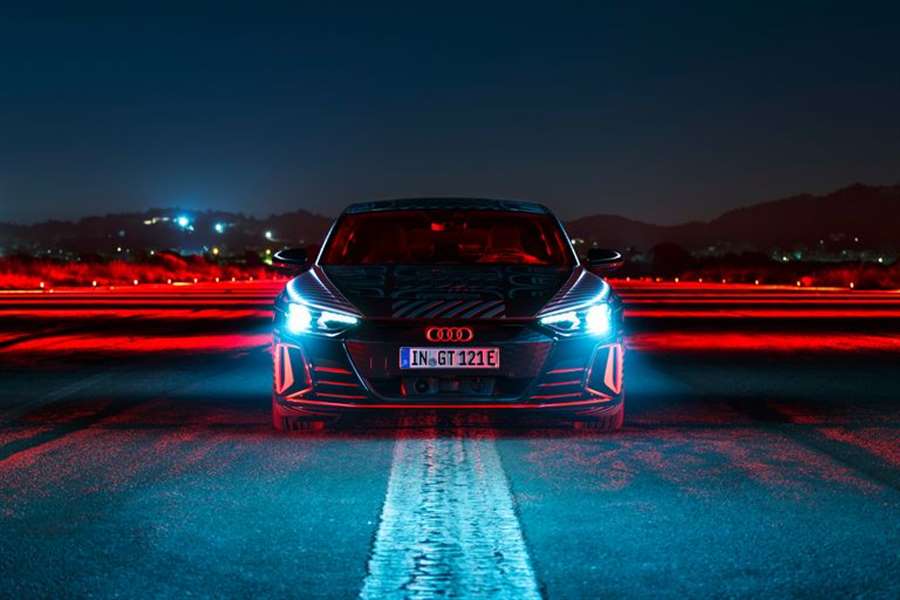
The suspension tune is rather soft, but the adaptive dampers stiffen in an instant. Lightning-quick step-off acceleration and the variable torque distribution give the e-tron GT nearly all of the agility and acceleration of the Taycan Turbo S. This is despite a claimed 4600-pound curb weight, which we think will be closer to 5000 when United States-spec cars are finalized. Audi engineers left in a bit of body roll, giving the driver a good sense of reaching the limits of adhesion, while the steering is pleasantly light. The RS e-tron GT is a fantastic performer, but it has a distinct character. It feels a bit less darty than the Taycan, and it is a bit more comfortable and relaxing on long drives.
Inside, there is a wide, horizontal, and angular dash that takes the futuristic design of e-tron SUV to the next level. Audi concealed the instrument panel, but we took a peek and liked what we saw. As in the Taycan, driver and passengers sit low. But it's comfortable, and the room in the rear seat is ample. The e-tron GT has three seats in back. The middle seat is raised and narrow. The large steering wheel is a key differentiator from Taycan, the mirrors are conventional instead of camera-based units on European versions of the e-tron SUV, and Audi has resisted the trend of retracting door handles.
A fixed panoramic roof will be standard. A carbon-fiber roof is optional and reduces weight by 18 pounds. Like the Taycan, the GT is a sedan. There's a 12-cubic-foot trunk with a small opening and a frunk (front trunk) with 3 cubic feet of storage. Audi is considering adding a hatchback version, possibly because Porsche will be adding a hatchback Taycan Cross Turismo next year. The structure is largely made from steel with some aluminum components, and almost all body panels with the exception of the roof are made from aluminum.
The body has a beautiful shape, with a fastback look and the right amount of aggressiveness from its creases and bulging fenders. It's hard to imagine that Audi could have pulled off the design if they had to package a powerful gasoline engine under the hood. RS versions don't get too much external differentiation. Spotters will have to check the nose for a honeycomb pattern in the grille and, of course, the RS badges.
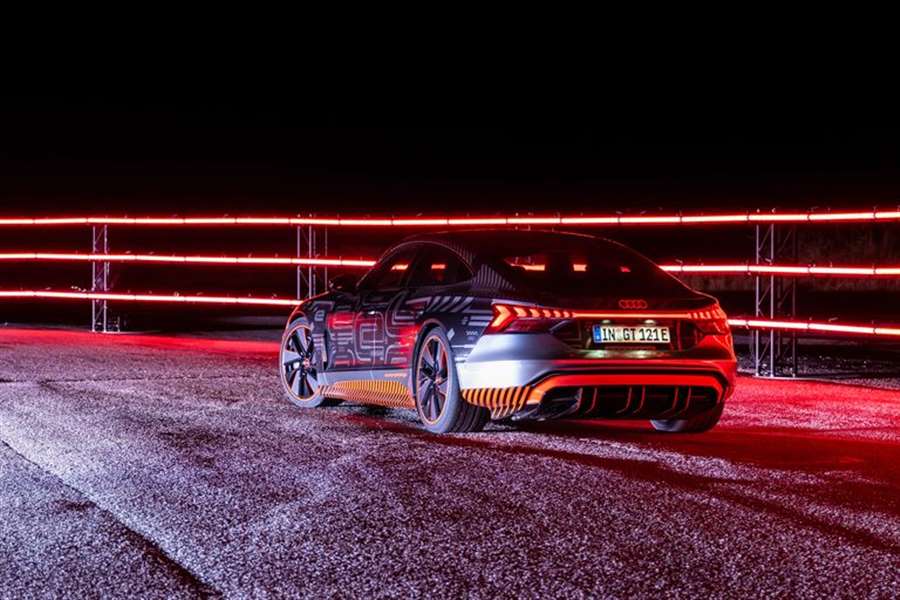
Audi claims a 249-mile range in the Euro cycle for the non-RS, but it isn't ready to release the details on the RS version. We'll assume it is less than the base model. Driven hard, we watched the range drop precipitously, so if you head out to hammer on the RS e-tron GT, set aside some time and a plan to recharge.
Final pricing is not yet available, but we're estimating a starting price the equivalent of $163,000, which makes the Audi RS e-tron GT about $12,000 less than the Taycan Turbo. We expect a similar difference when the Audi arrives in the U.S. next year, an important differentiator that works in the Audi's favor.
Source caranddriver.com
BMW iX3 SUV review
"The BMW iX3 is an electric variant of the popular X3 with a 285-mile range"
While BMW wowed the world with its i3 electric hatchback and i8 plug-in hybrid coupe, the all-electric BMW iX3 SUV is altogether a more staid proposition. This time round BMW is taking a similar approach to Peugeot and Hyundai by serving up an electric version of a car it already sells, namely the BMW X3.
There's been a deliberate decision not to go radical with the design, with BMW instead opting to add aerodynamic wheels, blue trim accents and a smoothed-off grille. There are also a new set of bumpers and side skirts, all tested to ensure they are slippery enough to help maximise the driving range. This is really just an X3 for buyers who want an electric powertrain.
Best electric SUVs
Under the car's floor is an 80kWh battery that sends its power to a rear-mounted 282bhp electric motor. This is a departure from rivals like the Audi e-tron, Jaguar I-Pace and Mercedes EQC, which all have two motors, four wheel drive and quite a bit more power. While it isn't as fast as them, the iX3's 285-mile range is competitive, beating both its German rivals and just slightly behind the I-Pace. The Jag’ struggles to hit its official figure in real-world driving anyway.
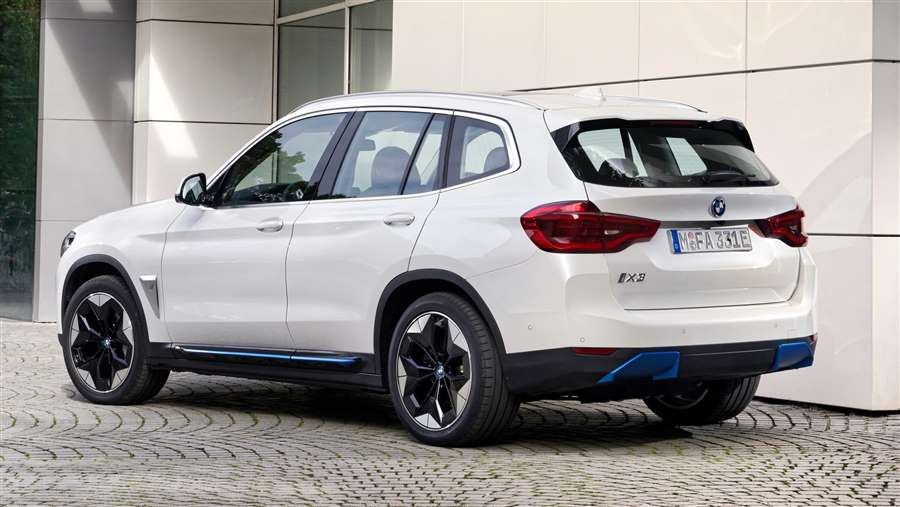
It can also be charged quickly, obtaining speeds of up to 150kW at the latest rapid-charging stations. Of its closest rivals, only the e-tron can match this, with the others topping out at around 100kW, and it means the iX3 battery can be replenished to 80% in a speedy 34 minutes. Thanks to this capability, making one stop on a long journey should be ample to get drivers to their destination with range to spare.
Like the exterior, the inside of the iX3 is very much a mild variation on the X3, with some flashes of blue trim to show this is the electric version. It shares the same 10.25-inch iDrive infotainment display perched above the dashboard and a 12.3-inch digital instrument screen. Premier Edition and Premier Edition Pro trims serve up plenty of equipment, with features like a head-up display, a Harman Kardon stereo and wireless phone charging in the top trim.
The BMW iX3 is spacious, quiet and has a good range, but it's a shame it doesn't feel anywhere near as special as the i3 and i8. Instead, it ushers in an era when electric BMWs will be a more mass-market part of the line-up.
By adding an EV option to its popular X3 range, BMW boasts that customers can now choose between four different powertrains for its mid-size SUV. It adds to the existing petrol, diesel and plug-in hybrid range, giving low to medium-mileage drivers the chance to shun traditional fossil fuels altogether.
BMW iX3 MPG & CO2
The iX3 has an 80kWh battery beneath its floor, allowing it to cover up to 285 miles on a charge. That's competitive with the 298-mile range of the Jaguar I-Pace, and betters the 237 and 256-mile range of the Audi e-tron and Mercedes EQC respectively.
Like the e-tron, the iX3 also supports rapid 150kW charging at compatible public locations, topping the battery up to 80% in just 34 minutes. The Mercedes and Jaguar can be topped up at around 100kW, so take longer to recharge.
As with any electric vehicle, the iX3 has the potential to significantly reduce running costs for the owner, and we particularly enjoyed one new feature for its energy recuperation system. Like most new EVs, the braking effect of the electric motor can be set to low, medium or high, and with practice it's possible to drive the iX3 in traffic with almost no use of the brakes. However, BMW has also added an ‘Adaptive’ setting, which automatically adjusts the recuperation to match the car ahead, a bit like adaptive cruise control for braking alone. It works well, carefully adjusting the regenerative effect to match cars in front, even when they modulate their deceleration.
Thanks to its zero emissions, the iX3 qualifies for free car tax and 0% BiK for company-car drivers in 2020/21.
Insurance groups
The insurance band for the iX3 hasn't been announced yet but it's likely to be fairly high. We say this because its rivals are all costly to insure, with the I-Pace in group 49 out of 50 and the Audi e-tron in the very top group. However, the iX3 is the least powerful of the group, so could be a few groups lower.
Warranty
BMW sells all its cars with a three-year/unlimited mileage warranty, which is on a par with Mercedes and slightly more generous than Audi (with a 60,000-mile cap). Tesla models come with a four-year or 50,000-mile warranty. It's likely the BMW iX3 will have a longer warranty covering its battery (many rivals offer eight years of cover), but details of this have yet to be announced.
Servicing
BMW models are fitted with an array of sensors to determine when servicing is required, so there isn't a strict routine to stick to. Typically, services won't be more than two years or 20,000 miles apart, and isn't the cheapest. BMW does offer servicing packages though, making it possible to spread the cost over monthly payments.
Unlike its rivals, the iX3 gets a single electric motor powering the rear wheels. This means it isn't as quick as the dual-motor Jaguar I-Pace in a straight line, but it still gets a sporty setup in typical BMW fashion.
In fact, it would have been better if BMW had made the suspension softer because in its pursuit of agile, fun handling, ride comfort has been compromised. Even in the softest Comfort mode, the iX3 fidgets and seems to find bumps in the road that look inconsequential from behind the wheel.
This chassis setup and the low-slung battery does at least mean the iX3 corners with little body lean, while the steering is fast to respond, if lacking in feel. Sport mode makes the steering heavier but also renders the suspension too bouncy, so we quickly turned it off.
BMW iX3 electric motor
The iX3 is powered by a single 282bhp electric motor at the rear axle, giving it a 0-62mph acceleration time of 6.8 seconds. This should be plenty quick enough for most SUV (and EV) buyers, but it's some way off rivals. The Audi e-tron, Jaguar I-Pace and Mercedes EQC all feature front and rear motors, providing more power and four-wheel drive.
The iX3 accelerates very quietly, with just a distant whine from its electric motor. If you prefer, you can also choose a louder sound thanks to 'balanced' and 'sporty' settings. The iX3 glides away from a standstill smoothly, with instant pulling power doing a good job of disguising its 2,185kg weight.
Interior & comfort
Unlike the daring BMW i3 and i8 models that set out BMW's stall as a designer of forward-thinking green models, the iX3 is a much more conventional model that's also available with electric propulsion. This will make sense for many customers, while others may view it as a bit of a disappointment.
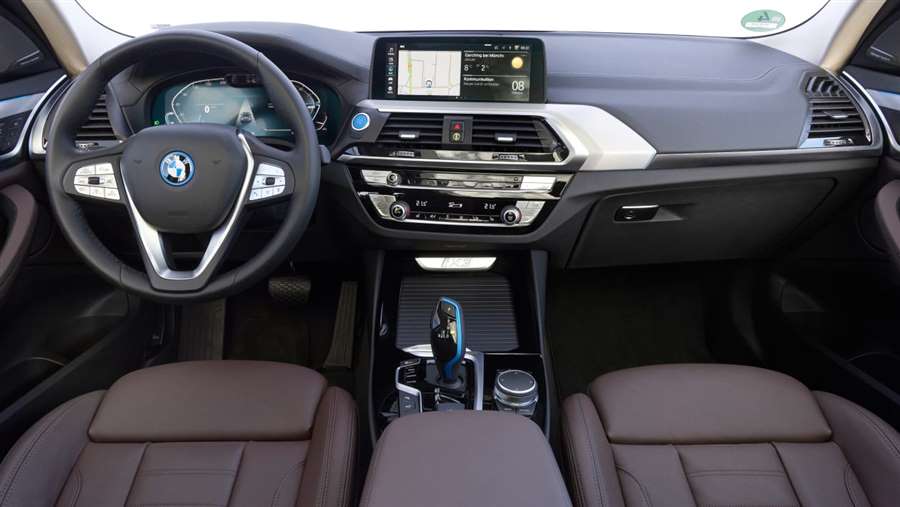
If you've sat in a BMW X3, there's very little change here apart from some blue flashes of colour for the BMW badge and gearlever. The steering wheel with silver buttons is new, while a 10.25-inch infotainment display and 12.3-inch digital instrument cluster is carried over, with Apple CarPlay and Android Auto.
Materials are of a high quality and the infotainment software is amongst the best in the business, but there aren't any novel features like trim made from recycled bottles or cork, as seen in many environmentally conscious models.
Equipment
The first versions of iX3 will be called Premier Edition and Premier Edition Pro, with four exterior colours offered, along with two choices of exterior trim colour: aluminium or gloss black. Standard kit includes wireless smartphone charging, heated front seats and Driving Assistant Professional.
Premier Edition Pro is distinguished by large 20-inch aerodynamic alloy wheels, along with a powered tailgate, adaptive suspension and a panoramic sunroof. It also boasts a plethora of tech like a head-up display, Harmon Kardon stereo, gesture recognition and a BMW IconicSounds Electric soundtrack developed with famous composer Hans Zimmer.
If there are concerns the iX3 is compromised compared with the regular model, fear not. It's virtually as usable for a family of five as the petrol or diesel car, and the boot is actually larger than the one in the plug-in hybrid BMW X3.
BMW X3 interior space & storage
There's plenty of space for adults in the front and back of the iX3 to stretch out, with the battery placed out of the way beneath the car's floor. In reality, most won't need the extra space found in the larger BMW X5 but there's no option of a third row of seats to make the iX3 into a seven seater.
Boot space
The iX3 has a 510-litre boot, which is 40 litres smaller than the petrol and diesel BMW X3 offer. In reality, most will be hard pressed to tell the difference, and surprisingly this is 60 litres more than the plug-in hybrid version of the X3 offers. The electric motor and transmission featured here is actually more compact than in the PHEV, so takes up less space.
Source: carbuyer.co.uk
Toyota Corolla Trek
"Go anywhere looks for faux off-road Corolla wagon"
Take the recently introduced Corolla Touring Sports estate, elevate the ride height, add some cladding to the bodywork and the result is this – the Toyota Corolla Trek.
Those of you with longer memories will recall the Toyota Tercel – a rugged-yet-compact four-wheel drive estate from the mid-1980s. This is not quite the same thing remixed for a modern audience, primarily because the Corolla Trek is front-wheel drive only, with no sign of a 4x4 model on the horizon.
In an admittedly small market sector where two of its key rivals – the Skoda Octavia Scout and Volkswagen’s Golf Alltrack – are available with four-wheel drive, that may be a limiting factor, but closer in spirit to the Toyota is the Ford Focus Active Estate, also an exclusively front-wheel drive model.
Unlike the Ford, there’s no Trek based on the Corolla hatchback body, but that would be a relatively straightforward addition if the market demand is there.
Will the Toyota Corolla Trek be good off-road?
It doesn’t look like it. While it does appear to be aimed at those with more adventurous lifestyles, it won’t be able to compete with more focused SUVs, such as Toyota’s own RAV4 and Land Cruiser.
Toyota Corolla Trek rear three-quarter
The Trek name comes from the bicycle brand Toyota has partnered with, a move which clearly highlights their intended market for this variant – keen mountain adventurers should take note. Compared with the regular Corolla Touring Sports estate, the Trek enjoys a 20mm increase in ride height, which isn’t going to take you very far off road, so a bike mounted on the roof would prove useful.
Toyota Corolla Trek: limited changes for an SUV look
Clearly the Corolla Trek is not a crossover, but a halfway house between a regular estate and an SUV, so visual changes from the Touring Sports are limited.
Outside, stylistic changes are restricted to chunkier bumpers complete with skid plates front and rear to lend an air of off-roading authenticity.
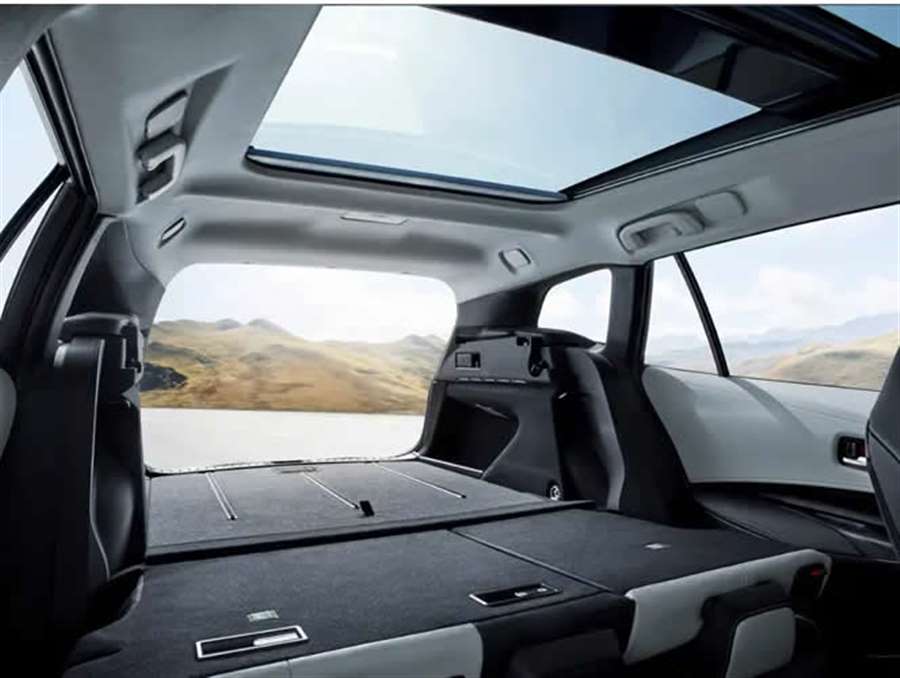
We’ve yet to see images of the interior, but Toyota’s referenced two-tone seat trim and wooden decorative panels. Whether this ‘wood’ is actually related to anything that was once a tree remains to be seen.
Toyota Corolla Trek: exclusively hybrid power
Cars with genuine off-road capability have long been most popular with diesel engines, but as Toyota’s ditching these kind of motors for its mainstream models, the Corolla Trek will be petrol-electric hybrid-only.
However, there’s a choice of two powerplants seen in the regular Corolla models: a 122hp 1.8-litre, which lacks low-range torque, but a much more powerful 180hp 2.0-litre should provide a considerably more pulling power when required.
Precise performance, economy and emissions figures will be released in due course
Source: parkers.co.uk

